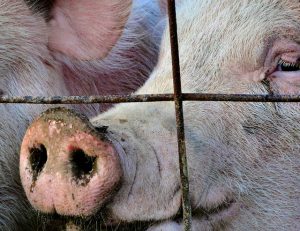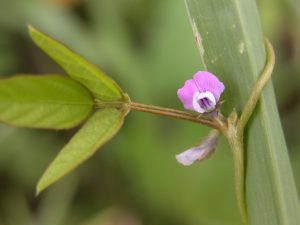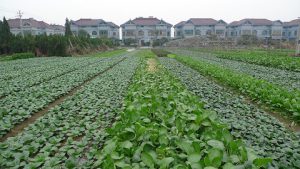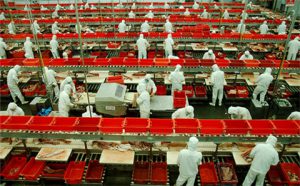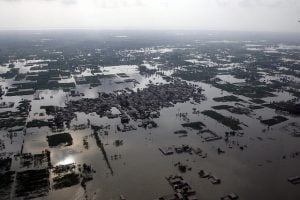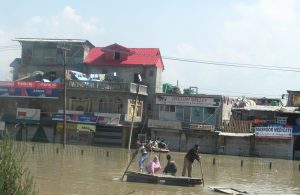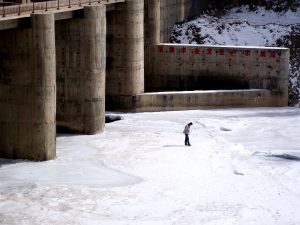China’s mainly small-scale agricultural sector, where the average farm is less than a hectare, needs significant investment and capacity building to adapt to climate change. In an interview with chinadialogue, Xu Yinlong, who is a member of the Scientific Steering Committee leading UNEP’s ‘Programme of Research on Climate Change Vulnerability, Impacts and Adaptation‘, explains the government’s strategy.
Chinadialogue (CD): What are the key features of Chinese agriculture in relation to climate change?
Xu Yinlong (Xu): Chinese agriculture is highly labour intensive, with limited land and water, and not enough surplus resources. Every inch of land needs to be fully used, and maximum yields obtained if we are to feed 1.3 billion people. Chinese agriculture is therefore extremely sensitive to climate change, and small changes could have huge consequences for output.
CD: What lessons has China learned so far?
Xu: The overall capacity of Chinese agriculture to adapt to climate change isn’t strong enough. There is inadequate awareness of adaptation, technical support is lacking, and management is weak.
China started building large-scale field infrastructure in the 1960s. But since the start of the privatised household responsibility system in the late 1970s, investment in agricultural infrastructure has been inadequate – even without climate change there would be an investment backlog. Climate change increases the amount of work needed, so it’s as if there’s a double burden to pay. There’s a huge ‘adaptation deficit’.
We ought also to have learned a lesson about the dangers of pursuing high yields at the expense of the environment. Droughts have become normal in north China, and are getting worse in northeast and southwest China. There are serious outbreaks of pests. This is very much linked with a failure to protect the environment.
CD: What are the main effects of climate change on Chinese agriculture so far?
Xu: First, it changes the environmental conditions in which crops grow, and the crop structure — there are localised changes in what is planted and how. Climate change also alters the typical weather and crop disasters that we see.
There is also an impact on agriculture-related industries and activities. The growing season is lengthening, with an earlier spring and a later winter, and timing of fertilisation, irrigation, planting and harvesting must all change. Production processes are altered as their elements all change: warmer temperatures mean nutrients circulate faster, organic soil content decreases, evaporation is faster. There are worsening shortages of water for irrigation. Coastal farming regions are at risk of flooding, saltification, or erosion.
CD: Can you mention some successful examples of adaptation?
Xu: After the cotton bollworm outbreaks in north China in the 1990s, cotton-growing gradually shifted to Xinjiang in the northwest. Temperatures in Xinjiang were rising which, coupled with technical advances, made Xinjiang into China’s main cotton-growing area. Now Xinjiang accounts for about half of all China’s cotton output.
In terms of types of adaptation, this is classed as an ‘overall transition’, where production moves en masse. With good planning for adaptation, there can be greater social, economic and environmental benefits.
There are other successful cases of agricultural adaptation. Large quantities of rice and corn have been planted in the north-east. Cultivation of tropical crops has expanded northwards. Mango and other tropical fruits are being grown commercially in Yunnan’s hot dry valleys and in Panzhihua in southern Sichuan, as is coffee. These have all been very profitable.
CD: You were one of the key drafters of China’s National Climate Change Adaptation Strategy, published in November 2013. What place does agriculture occupy in the Strategy document?
Xu: Agriculture is an important part of China’s adaptation to climate change. A new element of the Strategy was to divide the country into three zones by function: urban areas, agricultural development, and ecological security. Agriculture represented one of the three types of zone, making it very important.
CD: What does the Strategy say about agriculture?
Xu: There is some new content on adaptation for agriculture. For example, it calls for “strengthening disaster monitoring, warning and prevention measures.” Agricultural diseases and pests are spreading due to climate change, and the nature of meteorological disasters is changing, requiring better disaster prevention and mitigation measures.
As agricultural diseases and pests are changing, people need scientific information on how they are spreading. There are stocks of materials to deal with certain pests in areas where they were originally endemic, but this isn’t the case elsewhere. Stocks need building up. Disaster response also needs to be strengthened, and again stocks of materials built up.
Climate change is worsening the impact of meteorological disasters. Crops may not be harvestable after a long period of flooding or high temperatures, so more quick-growing crops should be planted, such as buckwheat, Chinese cabbage, or turnips. This is also a form of adaptation.
The Strategy calls for better water management and more efficient irrigation, to increase the efficiency of water use in farming. More precise land-use can make use of the increased temperatures under climate change – for instance, in hilly terrain climate change will have different effects on valleys and hill tops.
The planting of certain crops can be extended northwards. For example, a warming climate means winter wheat and tropical fruits can be planted further north than previously. The types and distribution of crops can be adjusted: water-hungry crops should be replaced with crops that can withstand arid conditions to adapt to worsening droughts.
Climate change is caused by increasing levels of CO2, and photosynthesis absorbs CO2, so we should make use of the increase in CO2 levels and breed crops which can cope with hot and dry conditions, and have high photosynthetic capacity.
Climate change will also result in greater climate fluctuations – we may see sudden changes between hot and cold conditions. To respond, we need to build up seed banks of different types of crops.
Also, the boundary between arable and livestock farming, which runs from China’s northeast to Ningxia in the northwest, will be more affected by climate change. There needs to be cooperation across the boundary – farms near the boundary can plant a food crop one season and fodder the next. Arable farms can also be run to supply livestock farms by planting fodder crops and increasing the output of both types of agriculture. That’s a very good method of adaptation.
Finally, the Strategy calls for expanding trials of agricultural insurance and increasing the types of insurance available. The section on boosting funding and financing, it calls for state support for the development of insurance products and services for the agricultural and forestry sectors, development and promotion of weather-related insurance, and the issuance of disaster bonds, in order to respond to climate change.
